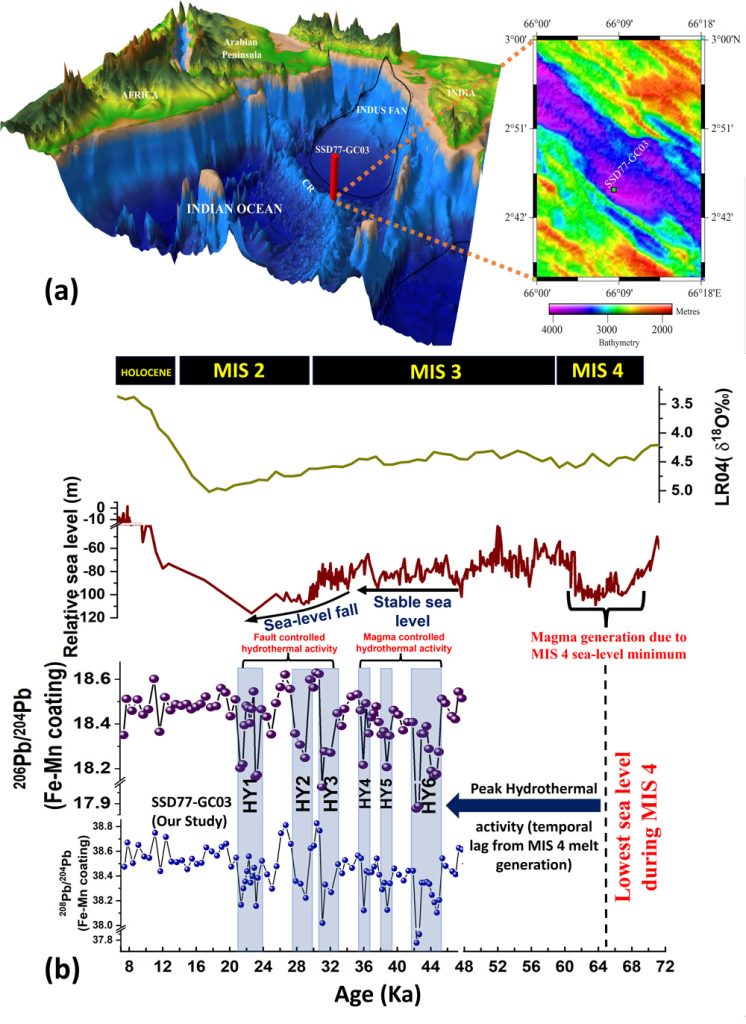Lead isotopes reveal that hydrothermal variability is driven by Sea‐Level change and transient magmatism
De and his colleagues’ study presents the first millennial-scale reconstruction of hydrothermal variability at a mid-ocean ridge using lead (Pb) isotopes from authigenic iron-manganese (Fe–Mn) coatings. Six hydrothermal events marked by unradiogenic Pb excursions and accompanying cobalt, nickel, and chromium (Co–Ni–Cr) enrichments over the Carlsberg Ridge are identified during the past 49 kyr. A key result during glaciation time (e.g., Marine Isotope Stage 4, MIS-4) sea-level low stand triggered enhanced magma production and increased hydrothermal activity, indicating that decreased hydrostatic pressure can initiate magmatic processes well before the Last Glacial Maximum, as suggested earlier. During the MIS 3–2 transition (i.e., entering the last glaciation), rapid sea-level drops generated additional pulses through increased fault-controlled permeability. These patterns reveal two forcing modes: melt-driven and fault-driven hydrothermal responses to sea-level fall. Fe–Mn coatings emerge as a powerful archive linking sea-level change to hydrothermal activity across glacial cycles, and Pb isotopes in these coatings are sensitive enough to track these subtle shifts in hydrothermal behaviour.

Reference:
De, S., Singh, S. K., & John, R. (2025). Millennial‐Scale Hydrothermal Variability at the Carlsberg Ridge Driven by Sea‐Level Change and Transient Magmatism. Geochemistry, Geophysics, Geosystems, 26. Access the paper: 10.1029/2025gc012552
